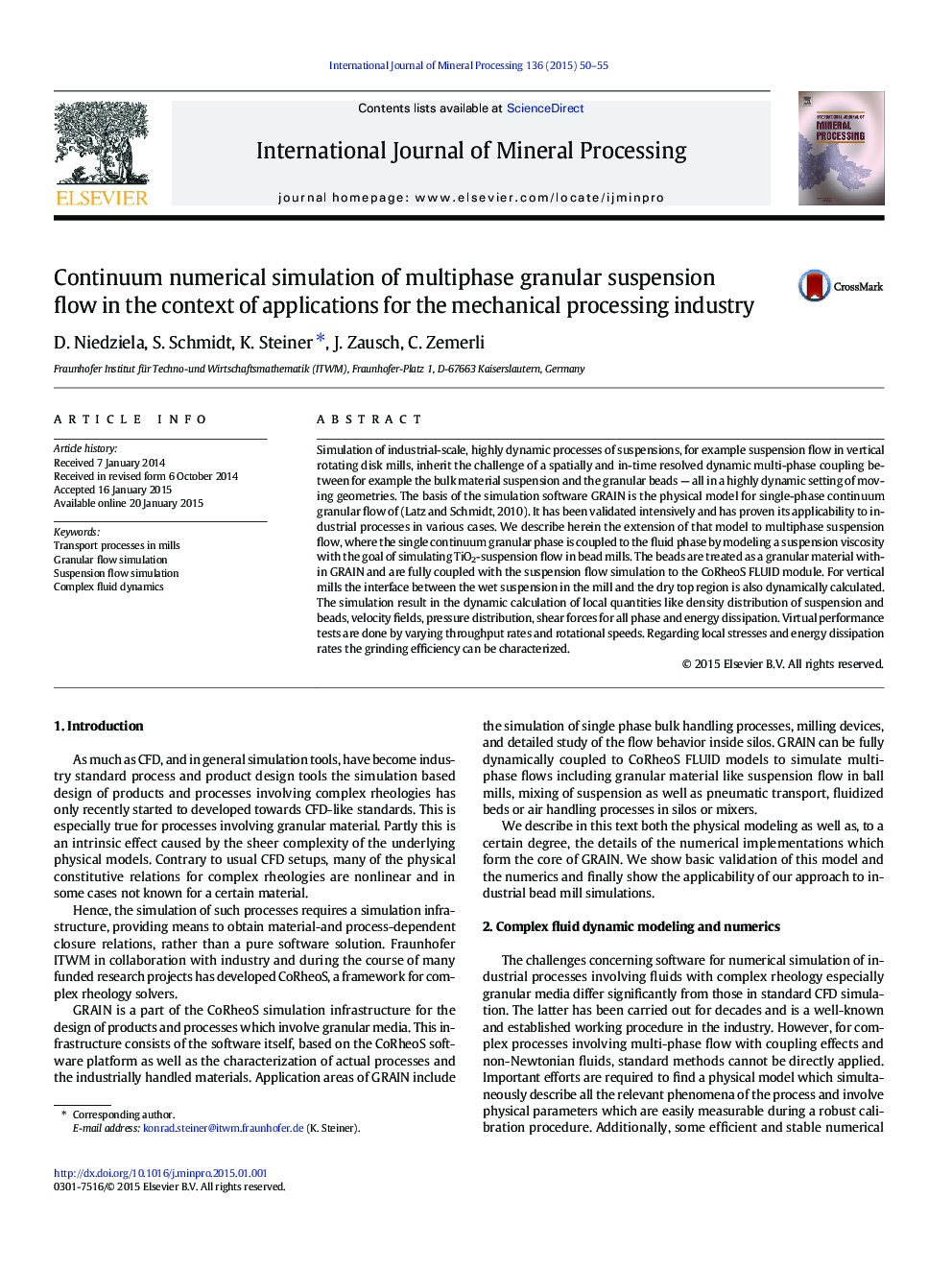| Article ID | Journal | Published Year | Pages | File Type |
|---|---|---|---|---|
| 213936 | International Journal of Mineral Processing | 2015 | 6 Pages |
•We developed a consistent continuum multi-phase model for granular suspension flow from dilute to dense regime.•We derived a suitable numerical simulation method.•We systematically validate the simulation for single-phase granular flow to multi-phase systems.•Mechanical processes in industrial apparatus like mixer or mills can be simulated correctly in detail.•The simulation technique can be applied to design and optimize mechanical processing units and plants.
Simulation of industrial-scale, highly dynamic processes of suspensions, for example suspension flow in vertical rotating disk mills, inherit the challenge of a spatially and in-time resolved dynamic multi-phase coupling between for example the bulk material suspension and the granular beads — all in a highly dynamic setting of moving geometries. The basis of the simulation software GRAIN is the physical model for single-phase continuum granular flow of (Latz and Schmidt, 2010). It has been validated intensively and has proven its applicability to industrial processes in various cases. We describe herein the extension of that model to multiphase suspension flow, where the single continuum granular phase is coupled to the fluid phase by modeling a suspension viscosity with the goal of simulating TiO2-suspension flow in bead mills. The beads are treated as a granular material within GRAIN and are fully coupled with the suspension flow simulation to the CoRheoS FLUID module. For vertical mills the interface between the wet suspension in the mill and the dry top region is also dynamically calculated. The simulation result in the dynamic calculation of local quantities like density distribution of suspension and beads, velocity fields, pressure distribution, shear forces for all phase and energy dissipation. Virtual performance tests are done by varying throughput rates and rotational speeds. Regarding local stresses and energy dissipation rates the grinding efficiency can be characterized.
